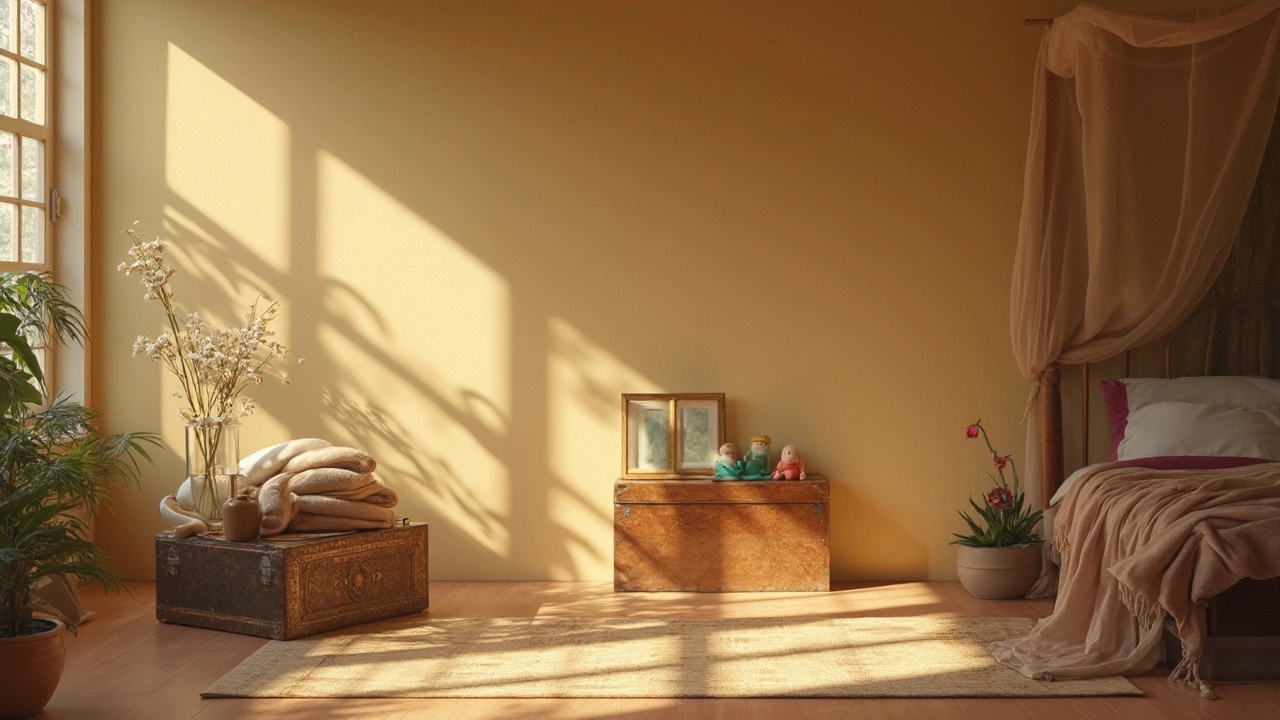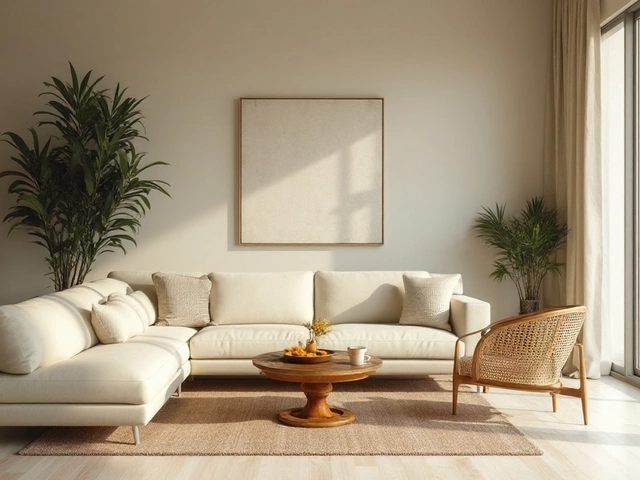Ever walk into a room, spot a pile of stuff on every surface, and think, “How does it get like this?” You’re not alone. Clutter sneaks up because life is busy, and it doesn’t take much for things to spiral out of control. But fixing it isn’t about being a neat freak—it’s about making your life feel less cramped and hectic.
If you want to make progress, don’t try to do it all in one go. The quickest way to burn out is aiming to declutter the whole house in a day. Start with just one part of one room, like the coffee table or that overstuffed drawer. You’ll see fast results and get a little boost to keep going.
Grab three boxes or bags and label them: Keep, Donate, Toss. As you sort, ask yourself: Do I use this? Do I really need it? It’s shocking how much stuff you keep just out of habit or guilt. Trust your gut—if you haven’t touched it in a year, chances are, you won’t miss it.
- Why Does Clutter Happen So Fast?
- Where to Start When Everything Feels Messy
- Creative Storage Hacks for Every Room
- What to Toss, What to Keep
- How to Keep Clutter from Coming Back
Why Does Clutter Happen So Fast?
Ever notice how you tidy up one weekend, and by Friday your living room looks like a yard sale exploded? That’s not just bad luck—it’s actually a mix of human habits and how our houses are set up. In fact, according to the National Association of Professional Organizers, over 80% of clutter is caused by disorganization, not lack of space. We just don’t put things back or have real homes for our stuff.
Another reason clutter builds up is because we keep bringing new things into the house. A family of four averages around 100 new items every month, from school papers to fast food toys to random Amazon impulse buys. Most of those things don’t get put away right away, so it just piles up.
Decision fatigue is another big one. You probably don’t want to spend your energy deciding where every single item should go after a long day, so stuff lands wherever there’s an empty spot. Kids add even more to the mess, with toys, clothes, and their “treasures” scattered everywhere.
Here’s a look at the top reasons clutter multiplies so fast in regular homes:
- No consistent system to put things away
- Bringing new stuff home without tossing anything out
- Busy routines = less time to tidy up
- Sentimental items piling up "just in case"
- Not enough storage, or hard-to-reach storage
How bad can it get? Check out these numbers:
| Clutter Fact | Stat |
|---|---|
| Average number of items in an American home | 300,000 |
| Number of hours each year wasted looking for things | 2.5 days |
| Households with at least one storage unit | About 10% |
When you see how quickly stuff comes in—compared to how rarely we all clean out—it’s no wonder keeping your declutter plan on track feels impossible sometimes. But knowing why clutter sneaks up is half the battle to taking control.
Where to Start When Everything Feels Messy
When clutter is everywhere, your brain almost freezes up. You stand there thinking, “Where do I even begin?” The secret is to aim small. Big changes don’t start with the attic or the garage—they start with a single, manageable spot. Experts say a visible "quick win" area, like your entryway table or kitchen counter, is the best place to begin. Grab a timer for 15 minutes. You’ll be surprised at how much you get done fast and it feels less overwhelming.
Don’t just toss stuff into a random drawer to make things look tidy. You’re actually just moving clutter around. Instead, use the three-box method from earlier—'Keep,' 'Donate,' and 'Toss.' Be honest with yourself as you sort through items. That pile of takeout menus? If you order everything online now, it’s time to recycle them. A mountain of old batteries? Stores like Home Depot have collection bins—get rid of them responsibly.
If mental blocks keep stopping you, break the job into these small steps:
- Pick one flat surface or small drawer. Don’t try to do a whole room.
- Clear everything off or out of that spot, placing items in your three boxes.
- Wipe the surface or drawer—sometimes that bit of cleaning helps you feel like things are actually changing.
- Only put back what you need or truly love. Everything else—deal with it right away so you don’t end up with lingering “donate” bags months later.
Studies show that just clearing one visible area makes the next step easier. You start to see a path forward. And if you hit a wall of decision fatigue, just set that timer again for another 10 minutes later in the day. Tiny chunks add up fast. Getting started is always the roughest part, but the payoff in both space and headspace is real.

Creative Storage Hacks for Every Room
Making space in each part of your home isn’t about buying fancy organizers for everything. It’s about getting smart with what you’ve got and finding new spots to stash stuff so it’s not always on show. Here’s how you can stay on top of things in every room—without turning your house into a storage locker.
Declutter basics start in the entryway. Instead of tossing shoes and bags on the floor, put up hooks for coats, baskets for beanies or scarves, and a narrow shelf for keys and mail. Wall-mounted storage won’t eat up your walking space, and you’ll always know where your stuff is on crazy mornings.
In the living room, try furniture that pulls double duty. An ottoman with storage inside can hide board games or extra blankets. Wall shelves keep books and knickknacks off the coffee table. Even a simple crate or decorative box can tame remote controllers, chargers, or kids’ toys. Did you know the average living room collects nearly 300 items by the end of the year? No wonder it can feel crowded.
Kitchens are notorious for clutter because there are so many gadgets and utensils. Get ruthless about what you actually use. Store pots and pans on a rack so cabinets hold what you really need. Use clear bins in the pantry so it’s easy to see what you’re running low on. Magnetic spice racks on the fridge can clear a whole drawer.
- Hang a rail under the cabinets to hold mugs or utensils.
- Turn a lazy Susan into a snack station for the kids—no more digging in the back of the shelf.
Bedrooms collect stuff fast. Try under-bed containers for off-season clothes or shoes you rarely wear. Use baskets or boxes on closet shelves so folded clothes don’t topple into a mess. If you’ve got kids, set up a “treasure box” for their random favorite things—less stuff ends up on the floor, and it’s easier for them to help clean up.
The bathroom is easy to overlook. Over-the-toilet shelves give you a bonus spot for towels and toilet paper. Use a shower caddy not just for soap, but for everyday items like razors, hairbrushes, or lotions.
| Room | Top Storage Hack | Clutter Buster Fact |
|---|---|---|
| Entryway | Wall hooks & baskets | Hooks cut entry mess by 50% |
| Living Room | Storage ottomans & shelves | Multipurpose furniture frees up 30% space |
| Kitchen | Vertical storage, clear bins | Clear bins save 20 minutes a week looking for stuff |
| Bedroom | Under-bed storage | 80% of under-bed space never gets used |
| Bathroom | Over-the-toilet shelving | Adds up to 4 cubic feet of space |
Looking for a low-budget fix? Repurpose what you already have, like old glass jars for cotton swabs, shoe boxes for cords, or magazine holders for cutting boards. Good storage makes everything feel more open, uses forgotten spots, and keeps the mess from sneaking back in.
What to Toss, What to Keep
Here’s where decluttering gets real. Deciding what to keep or let go can feel rough, especially when you’re dealing with stuff that has memories attached. But the truth? Most homes have hundreds of items no one actually uses. A 2023 survey found the average American household holds over 300,000 items—no kidding—so it’s easy to see how things get out of hand fast.
The trick is to ask the right questions. If you’re blinking at a pile of stuff, try these:
- Have I used this in the past year?
- Does it work or is it broken?
- Would I buy this again today?
- Is this a spare, or do I have multiples?
- Does it actually fit (clothes, shoes, accessories)?
When you answer honestly, it’s surprising what you’re holding onto for no real reason. If it’s broken, let it go. If it’s still in the box after six months, sell or donate it. Most experts agree: if you haven’t used something in over a year and it isn’t a seasonal item, chances are you won’t miss it. Here’s a quick look at where most clutter hides in homes, based on a 2024 decluttering report:
| Area | Common Clutter Items |
|---|---|
| Kitchen | Duplicate utensils, old food containers, unused gadgets |
| Closet | Clothes that don’t fit, worn-out shoes, old bags |
| Bathroom | Expired meds, dried-up makeup, half-used shampoos |
| Garage | Random cords, rusty tools, broken sports gear |
Don’t get hung up on “someday I’ll need this.” If you really think you might, box it up, date it, and stash it out of sight. If you don’t dig it out in the next six months, out it goes. This system keeps the declutter process honest—and your house starts to feel lighter, fast.

How to Keep Clutter from Coming Back
The real challenge isn’t decluttering one time—it’s stopping the mess from creeping back. After all, the declutter process only pays off if you stick with it. People who keep their homes tidy don’t have some magical willpower; they just have easy-to-follow habits that work in real life, not just on Instagram.
Let’s face it: everyone buys stuff they don’t need. According to a 2024 survey by Slickdeals, the average American spends $151 a month on impulse purchases. That’s nearly $1,800 a year on things that often end up as clutter. If you set a simple rule for new things coming in—like “one in, one out”—you break the cycle right there. So, if you get a new jacket, donate or recycle an old one.
- Have a regular reset time: Pick one day a week where you spend 10 or 15 minutes putting things back. It’s way less stressful than waiting for a disaster zone and then having to declutter again from scratch.
- Designate drop zones: Everyone tosses stuff when they come home (bags, keys, mail). Instead of fighting this, create drop spots that are easy to tidy up. A simple tray for keys and a small bin for mail can make a huge difference.
- Keep a donation box handy: Tuck a box in the closet or garage. When you find clothes or gadgets you don’t need, toss them in right away and drop them off when it’s full. No big cleanup needed—just a steady trickle out the door.
- Stop buying storage bins “just in case”: Tons of people think buying more containers = less clutter, but a study from UCLA’s Center on Everyday Lives found that families just use bins to hide stuff they don’t need. Only buy storage after you cut down what you own.
Want proof these tiny changes add up? Check these numbers from a recent home organization survey:
| Habit | Percent Who Saw Less Clutter |
|---|---|
| Weekly reset | 68% |
| Donation box system | 57% |
| One in, one out rule | 76% |
So don’t make it complicated. Consistent small habits beat a major overhaul every time. Just find a few routines that actually fit your life—and stick with them. That’s how you keep clutter from making a comeback.





